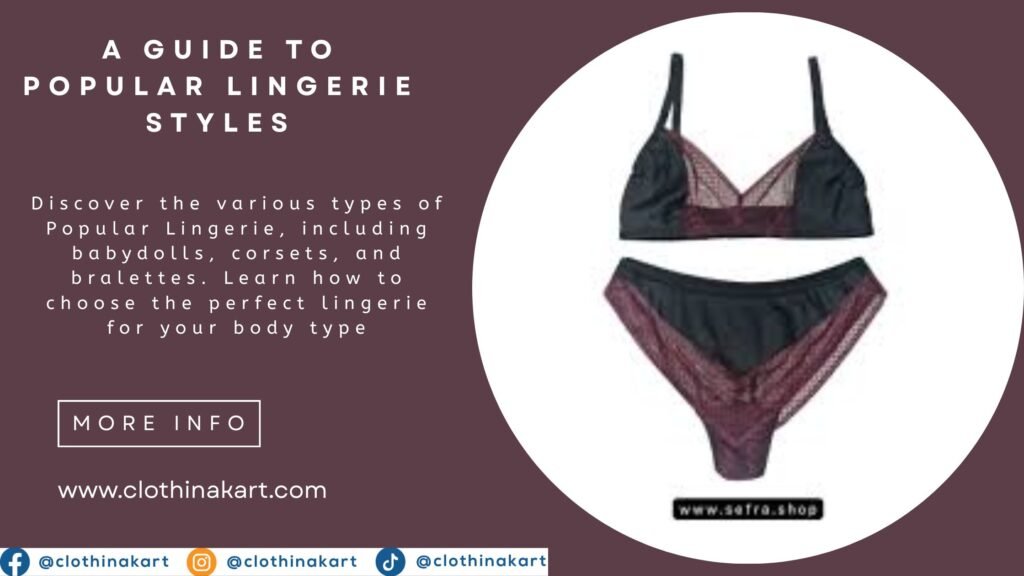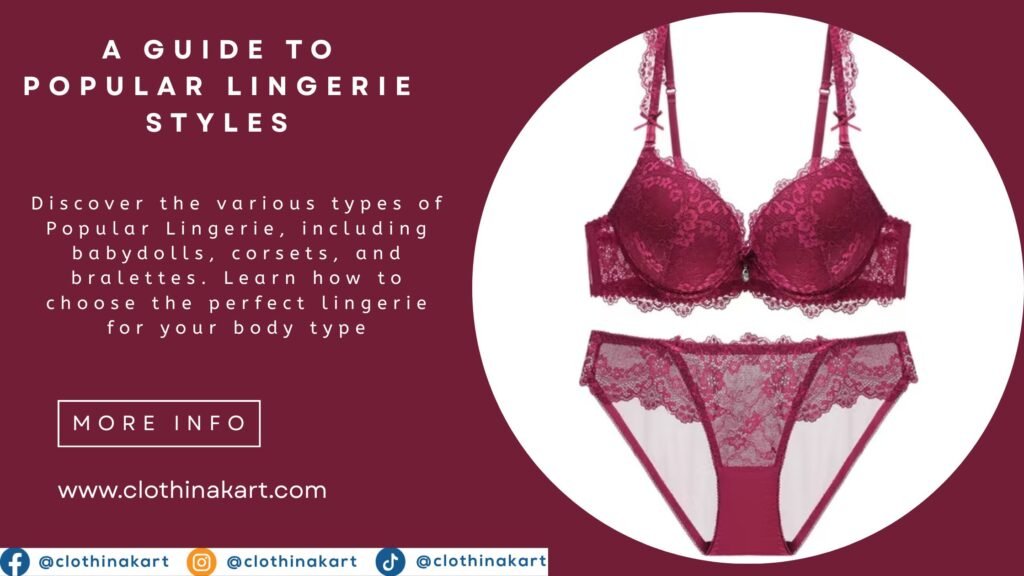Style & Trends
A Guide to Popular Lingerie Styles
Introduction
Lingerie is more than just undergarments; it’s a form of self-expression, confidence, and comfort. In the United States, the lingerie market has seen significant growth, with sales reaching over $15 billion in recent years. This surge reflects a growing appreciation for the diverse types of lingerie available, catering to various body types, occasions, and personal styles. Whether you’re seeking everyday comfort or something special for an intimate evening, understanding the different types of lingerie can help you make informed choices that align with your needs and preferences.
Shop Now
Exploring Different Types of Lingerie
1. Babydoll
The babydoll is a short, sleeveless nightgown, often featuring lace or sheer fabrics. Designed to be loose-fitting, it typically falls between the belly button and upper thigh, offering a playful and romantic aesthetic.
Pros:
- Comfortable and non-restrictive
- Flattering for various body types
- Ideal for sleepwear or special occasions
Cons:
- Limited support for the bust area
- May not provide warmth in cooler climates
2. Bralette
Bralettes are lightweight bras without underwires, offering comfort and a natural shape. They come in various styles, from lace to cotton, and can double as outerwear.
Pros:
- Comfortable for all-day wear
- Suitable for layering under sheer tops
- Available in a range of designs
Cons:
- May not provide sufficient support for larger busts
- Less structured than traditional bras
3. Corset
Corsets are structured garments designed to shape the torso, creating an hourglass silhouette. They often feature boning and lace-up closures.
Pros:
- Enhances waist definition
- Offers back support
- Versatile for both lingerie and outerwear
Cons:
- Can be restrictive if worn for extended periods
- Requires proper sizing for comfort
4. Teddy
A teddy is a one-piece garment combining a camisole and panties. Often made from lace or satin, it’s designed to be both alluring and comfortable.
Pros:
- Streamlined and flattering design
- Suitable for various body types
- Ideal for special occasions
Cons:
- Limited adjustability
- It may not be practical for everyday wear
5. Chemise
A chemise is a loose-fitting, sleeveless dress that falls just above the knees. Typically made from silk or satin, it’s both elegant and comfortable.
Pros:
- Lightweight and breathable
- Suitable for sleepwear or layering
- Flattering for various body shapes
Cons:
- Provides minimal support
- It may be too revealing for some preferences
6. Bustier
Bustiers are form-fitting garments that extend from the bust to the waist, often featuring boning and lace. They are designed to lift the bust and shape the waist.
Pros:
- Enhances bust and waistline
- Versatile for lingerie or outerwear
- Available in various styles and fabrics
Cons:
- Can be restrictive if not properly fitted
- May require assistance to put on
7. Camisole
A camisole is a sleeveless top, often made from silk or cotton, that can be worn as an undergarment or standalone piece. Wikipedia
Pros:
- Comfortable and versatile
- Suitable for layering
- Available in various lengths and styles
Cons:
- Provides minimal support
- May not be suitable for formal occasions
8. Negligee
A negligee is a sheer, often lacy nightgown designed for sleepwear or intimate occasions.
Pros:
- Elegant and sensual design
- Lightweight and comfortable
- Ideal for special occasions
Cons:
- Provides little to no support
- May be too delicate for regular use
9. Bodysuit
Bodysuits are one-piece garments that cover the torso and crotch, often made from stretchy materials like spandex or lace.
Pros:
- Creates a smooth silhouette
- Versatile for layering or standalone wear
- Available in various styles and fabrics
Cons:
- Can be challenging to remove for bathroom use
- May require specific sizing for comfort
10. Shapewear
Shapewear is designed to smooth and contour the body, often worn under clothing to enhance the silhouette.
Pros:
- Provides support and shaping
- Enhances confidence in fitted clothing
- Available in various levels of compression
Cons:
- Can be restrictive if worn for extended periods
- May require proper sizing for effectiveness
Buyer’s Guide: Choosing the Right Lingerie
When selecting lingerie, consider the following factors to ensure comfort, confidence, and suitability:
- Purpose: Determine the occasion—daily wear, special events, or sleepwear—to guide your choice.
- Body Type: Choose styles that complement your body shape. For instance, corsets can accentuate curves, while babydolls offer a relaxed fit.
- Material: Opt for fabrics that feel comfortable against your skin, such as cotton for breathability or silk for luxury.
- Support Needs: Assess the level of support required, especially for bras and shapewear.
- Size and Fit: Ensure accurate sizing to avoid discomfort and achieve the desired look.
- Care Instructions: Consider the maintenance required for delicate fabrics and intricate designs.
By understanding the different types of lingerie and their features, you can make informed decisions that enhance your wardrobe and personal style.



